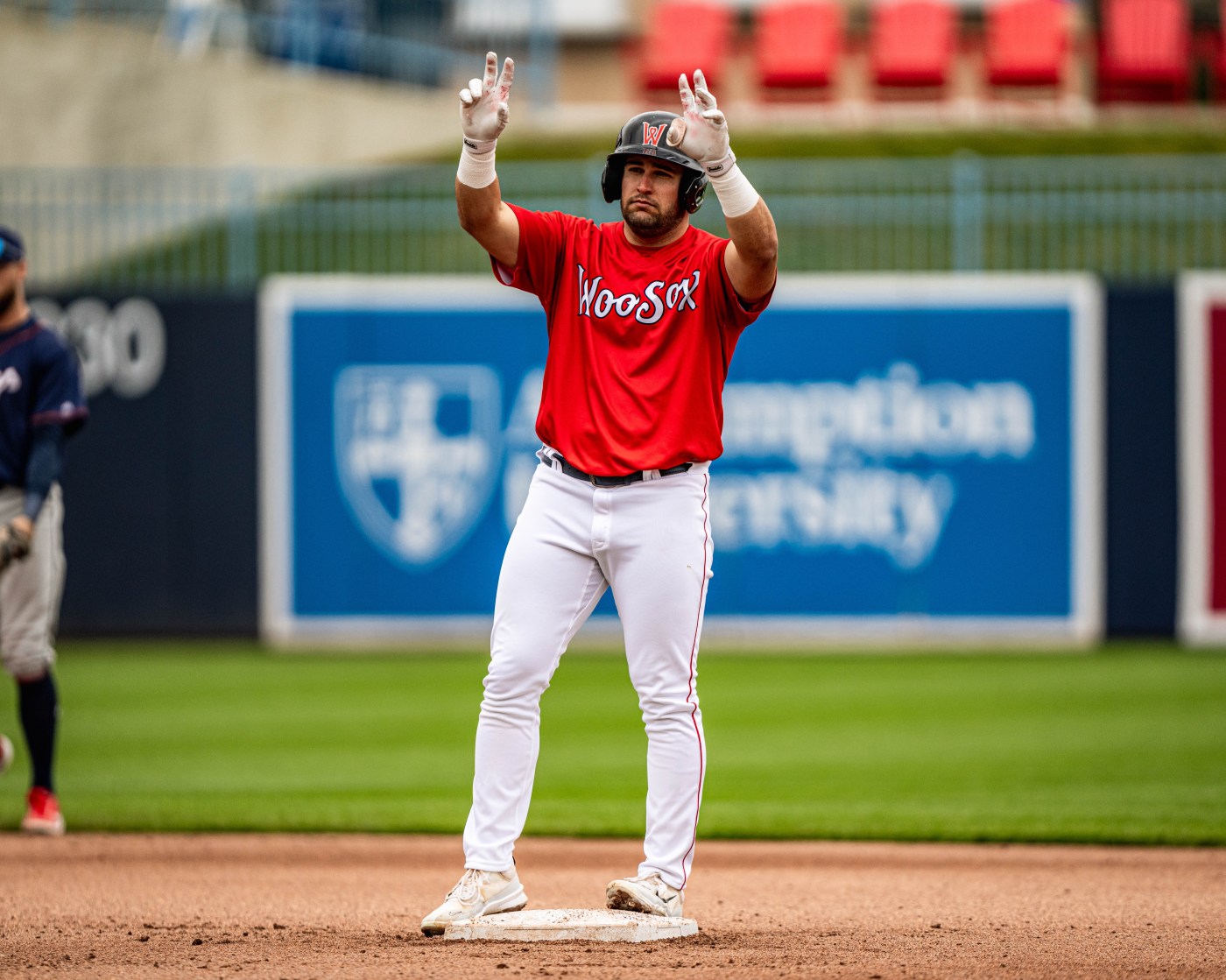
Minor League Notebook: ‘Less is more’ approach paying off for Red Sox prospect
WORCESTER — Two years ago Niko Kavadas emerged as one of the breakout performers of the Red Sox minor league system, rapidly moving through the ranks and earning the club’s 2022 Minor League Offensive Player of the Year award. But his game had a notable flaw, which was preventing him from realizing his full potential and last year caused his progress to stall.
He couldn’t stop striking out.
After recording an eye-watering 172 strikeouts in 117 games between Double-A Portland and Triple-A Worcester last season, Kavadas went into the winter determined to start making better contact. The 25-year-old has always boasted excellent plate discipline — he’s averaged 100 walks per season the last two years — but he had holes in his swing that opposing pitchers were learning to exploit.
Now Kavadas appears to have closed those gaps, and the results have been dramatic.
This season the WooSox first baseman has ranked among the most productive players in the Red Sox system, entering Thursday with a .310 batting average, .454 on-base percentage and a 1.124 OPS to go along with nine home runs and 25 RBI through his first 34 games. More importantly, he’s struck out 37 times while drawing 23 walks, cutting his strikeout rate from 35.8% last year to 28.4% this year.
So, what’s his secret?
“As counterintuitive as it may be, just trying to do less has allowed me to do more,” Kavadas said. “Not trying to hit a 500-footer on every swing has given me some adjustability and because of that I’m able to read the ball a little longer, I’m able to start on a dime, I don’t have to gear up to start and I think because of that I’m making a lot more contact in and out of the zone.”
Beyond a change in mindset, Worcester Red Sox manager Chad Tracy said Kavadas has spent a lot of time working on his bat-to-ball skills both in the batting cage and with the Trajekt machine, a device that can simulate live pitching. Taken together Kavadas is now better able to cover the top of the zone, and given his advanced batting eye and prodigious power, Kavadas is capable of doing damage whenever he gets the barrel on the ball.
“He’s a very powerful guy,” Tracy said. “He’s putting the ball in play more and for Niko, when the ball goes in play it has a chance to go into a gap or over the fence. It’s notably different.”
While it’s only been a little over a month, Kavadas looks much more like the guy who batted .280 with a .990 OPS in 2022 than the guy who batted .206 with an .805 OPS last year. His re-emergence has been especially encouraging given the way the Red Sox have struggled offensively at the big league level. With first baseman Triston Casas and designated hitter Masataka Yoshida both currently sidelined due to injury, it’s not crazy to imagine Kavadas getting a look if he keeps hitting at his current pace.
Yet while reaching the big leagues is Kavadas’ ultimate goal, the former 11th round pick out of Notre Dame believes he still has more to prove.
“From the time I was 5-years-old I wanted to be a big league baseball player, so being this close is exciting but the job’s not finished,” Kavadas said. “The goal is to keep it up and hope that I get the chance someday.”
A bitter pill for Winckowski
Josh Winckowski has enjoyed success at the big league level. Last year he was among Boston’s top relievers, posting a 2.88 ERA over 84.1 innings, and this year he was getting results again, posting a 3.33 ERA through 24.1 innings over his first 12 outings, including three starts.
Despite that, when Brayan Bello was activated from the injured list over the weekend, Winckowski was the odd man out.
“It was a short (conversation),” Winckowski said. “I was told we’re optioning you and you’re going to start down there, and that was all that I heard.”
Winckowski being demoted to Triple-A despite solid traditional numbers is a stark example of how the game has evolved. Pitchers are judged less by their on-field results and more by advanced metrics that focus on factors fully within their control, like their ability to strike batters out and avoid hard contact.
“Honestly I think my ERA speaks for itself but that’s not really what guys are getting graded on anymore,” Winckowski said. “I don’t think I grade out very well in those at all and I think that’s reflected in the decision that was made.”
A look at Winckowski’s Statcast page tells the story much better than the back of his baseball card. The 25-year-old ranks 11th percentile among MLB pitchers in hard-hit percentage (46.9%), 13th percentile in expected batting average (.288) and 14th percentile in expected ERA (5.42). His fastball and off speed pitches grade out similarly, and his Fielding Independent Pitching mark, which measures a pitcher’s ability to get strikeouts and avoid home runs, walks and hit by pitches, has been nearly a full run higher than his ERA each of the past two seasons.
Given the Red Sox shift in philosophy towards trying to fill up the strike zone with nasty stuff, a pitcher like Winckowski who lives and dies by the ground ball isn’t necessarily going to be valued as much as guys like Greg Weissert, Zack Kelly and Justin Slaten, who miss bats and produce much more attractive metrics.
Winckowski knows this, of course, and though he wasn’t told to do so explicitly, he plans to make some adjustments he hopes will lead to more swing-and-miss in his game.
“Even as a pitcher without being told you want to punch more guys out,” Winckowski said. “It makes the game easier, sometimes relying on your defense or the ball going to someone three or four times an inning can be tough, so even without being told I want to get more strikeouts.”
Difficult as this setback may be, Winckowski doesn’t need to look far for examples of guys who have been sent to Triple-A only to come back and enjoy renewed success at the big league level. Brennan Bernardino, Cooper Criswell and Kelly have all thrived after enduring similar disappointments, so don’t be surprised if Winckowski brings a different look when his number is eventually called again.
Romero’s loud debut
Mikey Romero, Boston’s first-round pick in 2022, made quite an impression in his season debut at High-A Greenville on Wednesday, going 1 for 4 with a triple and a run scored. The 20-year-old shortstop missed nearly all of last season with a back injury and was brought along slowly this spring as he completed his recovery, but now Romero should finally get a chance to prove himself after a rocky start to his professional career.


